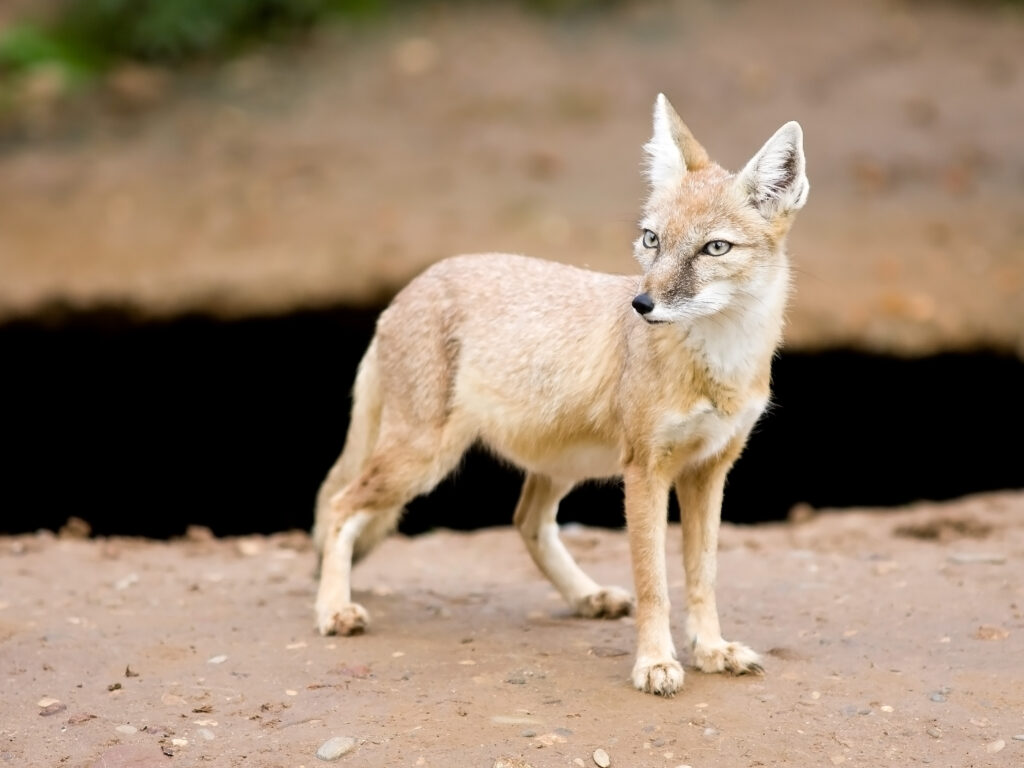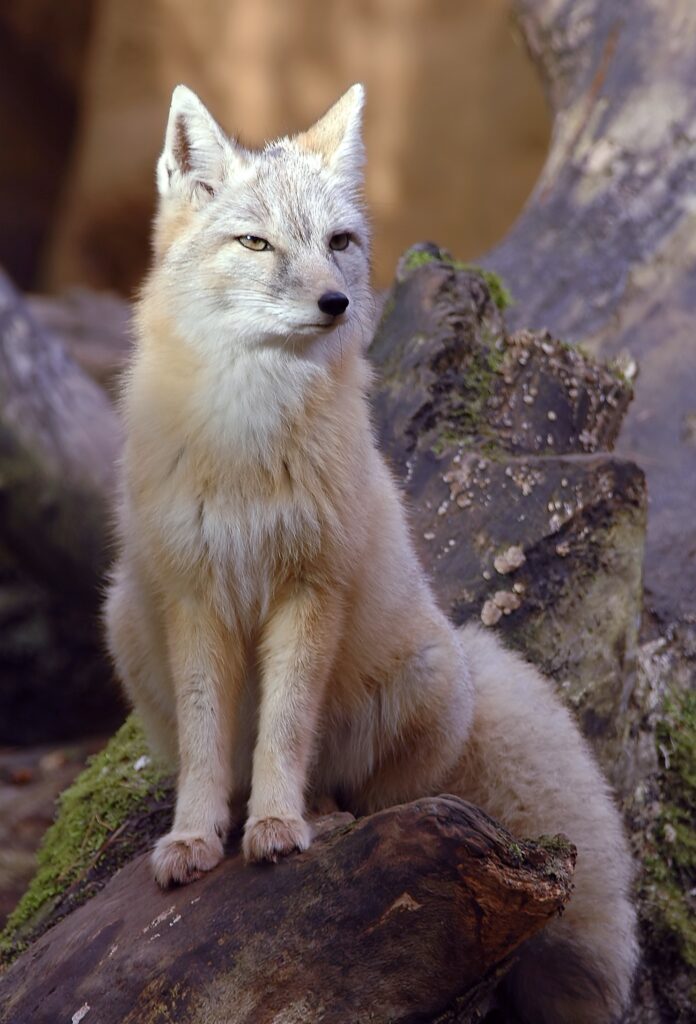

Common Name: Corsac Fox
Scientific Name: Vulpes corsac
Conservation Status: Least concern (Murdoch, 2014).
Habitat: Grassland steppes, semi-deserts, and deserts, avoiding mountains, forested areas and dense vegetation, and fixed-sand habitats (Murdoch, 2014).
Range: Middle Asian republics of Turkmenistan, Uzbekistan, Tajikistan, and Kazakhstan, as well as steppe and forest-steppe areas of Russia, including the southern region of Western Siberia. In Europe, they occupy the Samara Region, Tatarstan to the North, and northern Caucasia to the South. The steppe inhabited part of north-eastern China, most of Mongolia except for its forested and mountain regions, northern Afghanistan, and north-eastern Iran. The southern limit of distribution is unknown, but it probably reaches the mountain ridges separating the Tibetan Highlands from the north (Murdoch, 2014).
Diet: Primarily feeds on rodents but they also consume insects, pikas, birds, and plant material (Borsa, 2000).
Threats: Over-harvesting, throughout most of their range, Corsacs are hunted intensively for their pelts, they are also negatively impacted via overgrazing by livestock and landscape development (Murdoch, 2014).
